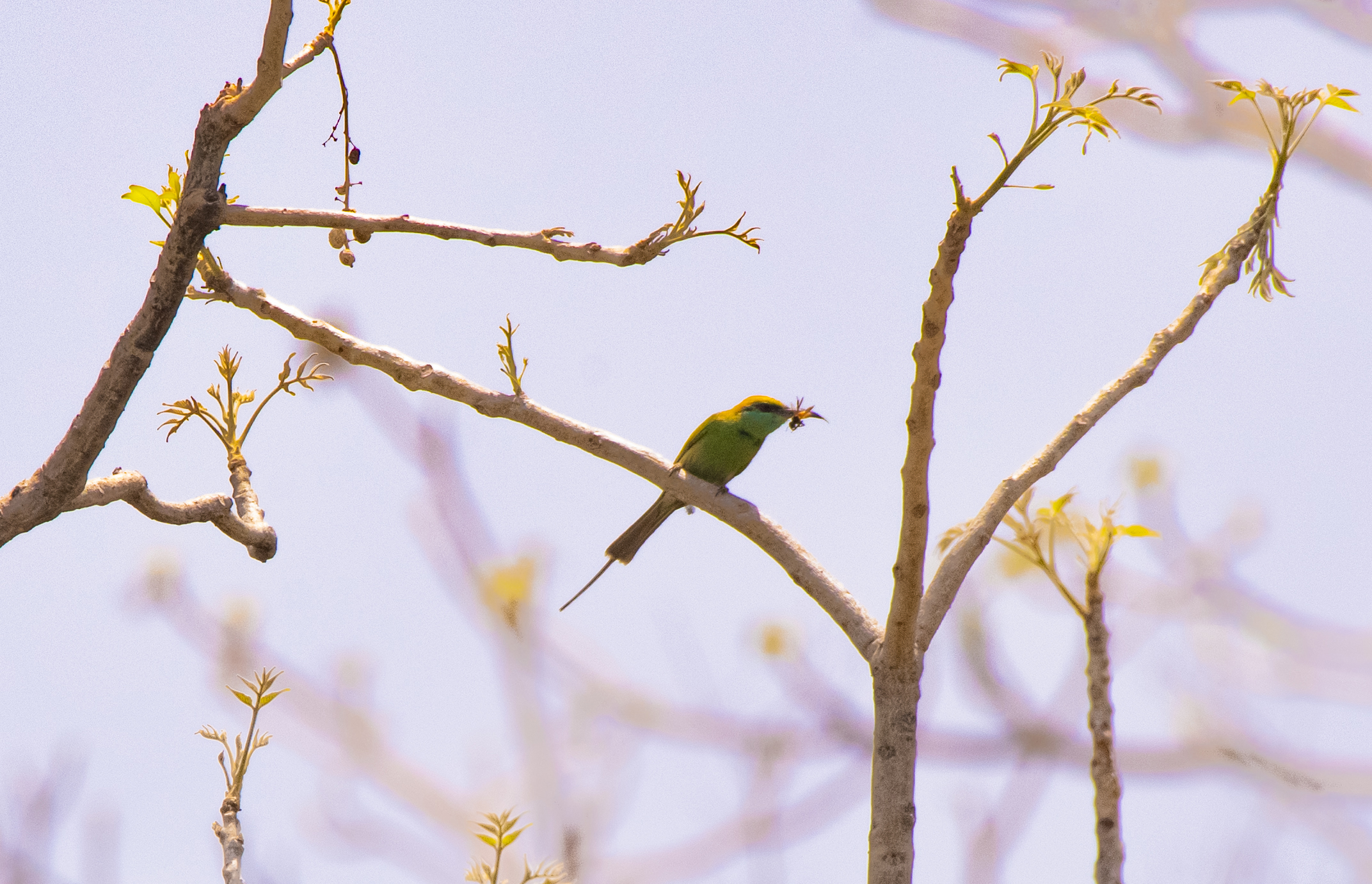
The 350-acre Kemri Nature Reserve is a cooperatively owned forest that falls under the Batheda Kalan Panchayat, less than an hour’s drive from Udaipur towards Chittorgarh. This luxuriant jungle is rife with flora typical of the Aravalli terrain, including indigenous trees like the Babool (Vachellia nilotica) and Dhok (Anogeissus pendula). Eye-catching rock-formations tower over the landscape, unmoving, even as hundreds of Karanj, Palash, Banyan, and Khajoor trees jostle for space in the all-pervading scrubland. Seasonal streams drain into a large freshwater lake in the midst of these verdurous, life-supporting surrounds. Today it is considered a biodiversity haven, and is home to over 200 species of birds and some 30 types of mammals, reptiles, and aquatic life.


But it wasn’t always so. “Back in the late nineties, when we decided to protect the habitat, it was vastly degraded from insufficient rainfall and depletion of groundwater, and there were barely 50 acres under forest cover,” recalls Mayur Dhwaj Singh, a former banker at the helm of this conservation project. “Our team has subsequently conducted volunteer-driven plantation drives, awareness programmes, as well as, leadership and team-building exercises around ecotourism and community outreach.” Towards this end, of the many ecologically sound experiences that await nature-lovers and soft-adventure seekers at the Kemri Nature Reserve, planting trees is eagerly encouraged.


Nearly 15 km of a motorable road inside the reserve has been divided into several activity-specific trails. Anywhere between one and 4 km in length (one way), these trails are best suited for long walks, meditative forest-bathing, and leisurely cycling. In the not too distant future, equestrian rides may come available. Kemri Nature Reserve also provides an excellent opportunity for resident and migratory bird-spotting around the year (see checklist). In addition to this, night drives along these trails can often bring about up-close encounters with hyenas, jackals, nilgai, civet cats, hares, and porcupines. Lakeside activities include boating, catch-and-release angling, and a short hike to a prehistoric rock painting.

Kemri Nature Reserve Checklist
Winter birds: Gadwall Duck, Pintail Duck, Ruddy Shelduck, Common Teal, Common Pygmy Goose, Shoveller Duck, White-eyed Pochard, Osprey
Summer/Monsoon Birds: Golden Oriole, Jacobian Cuckoo, Indian Hawk Cuckoo, Paradise Flycatcher
Information Box
Dos & Don’ts-
No littering the trails
-
Carry back all plastic/rubbish for proper disposal
-
Strictly no smoking in the reserve
-
Carry reusable water bottles
-
Adopt a ‘leave no trace’ policy
-
Avoid loud music and alcohol consumption
-
Connectivity: Udaipur (44 km) is the closest airport, rail and road head
-
Best Season: Winter
-
For stay options and other details, visit kemrinaturereserve.com (http://www.kemrinaturereserve.com/index.htm)




